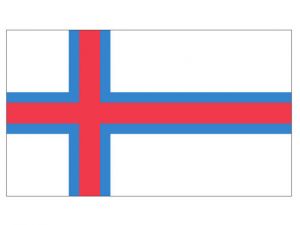Difference between revisions of "Language/Faroese/Grammar/Possessive-Adjectives"
m (Quick edit) |
m (Quick edit) |
||
| Line 1: | Line 1: | ||
<span pgnav> | |||
{| class="wikitable pg_template_nav" | |||
|[[Language/Faroese/Vocabulary/Eating-and-Drinking|◀️ Eating and Drinking — Previous Lesson]] | |||
|[[Language/Faroese/Grammar/Possessive-Pronouns|Next Lesson — Possessive Pronouns ▶️]] | |||
|} | |||
</span> | |||
{{Faroese-Page-Top}} | {{Faroese-Page-Top}} | ||
| Line 89: | Line 96: | ||
{{Faroese-Page-Bottom}} | {{Faroese-Page-Bottom}} | ||
<span pgnav> | |||
{| class="wikitable pg_template_nav" | |||
|[[Language/Faroese/Vocabulary/Eating-and-Drinking|◀️ Eating and Drinking — Previous Lesson]] | |||
|[[Language/Faroese/Grammar/Possessive-Pronouns|Next Lesson — Possessive Pronouns ▶️]] | |||
|} | |||
</span> | |||
Revision as of 22:45, 2 April 2023
| ◀️ Eating and Drinking — Previous Lesson | Next Lesson — Possessive Pronouns ▶️ |
Possessive adjectives are used to indicate ownership or possession in Faroese. They are placed before the noun they describe, and agree in gender and number with the noun they modify. In this lesson, you will learn the Faroese possessive adjectives and how to use them in sentences to indicate possession.
Faroese Possessive Adjectives
The Faroese language has different possessive adjectives for each gender and number. Here are the possessive adjectives in the singular and the plural forms, along with their translations:
| Faroese | Pronunciation | English | |
|---|---|---|---|
| Singular | Mín | [mi:n] | My (masculine) |
| Tín | [ti:n] | Your (masculine) | |
| Hannara | [han:aɹa] | His | |
| Honara | [hɔnaɹa] | Her | |
| Dín | [d:i:n] | Your (feminine) | |
| Sín | [si:n] | His/her/its/one's own | |
| Plural | Okkara | [ɔxkaɹa] | Our (masculine and feminine) |
| Teyra | ['tʰɛira] | Your/Their (masculine and feminine) | |
| Hennara | [hɛn:ara] | Their (masculine and feminine) |
For example, to say "my cat" in Faroese, we use the possessive adjective "mín" followed by the noun "kettlingur" (cat), which becomes "mín kettlingur".
Examples
Here are some example sentences using possessive adjectives in Faroese:
- Mín kettlingur er svartur. (My cat is black.)
- Honara bilur er góð. (Her car is good.)
- Okkara hús er stórt. (Our house is big.)
- Teyra børn eru fegin. (Their children are happy.)
Notes
- Possession can also be expressed with the preposition "av" (of) + a pronoun. For example, instead of saying "mín kettlingur", one can say "kettlingurin av mær" (the cat of mine). - The Faroese language has different forms of the possessive pronoun based on the case of the noun it modifies. This will be covered in a later lesson.
Congratulations, you have learned another crucial aspect of Faroese grammar! Keep practicing and you will soon master the language.
Other Lessons
- Plurals
- Give your Opinion
- Question Words
- Verb To Be
- Present Tense
- Possessive Pronouns
- Personal Pronouns
- Regular Verbs
- Future Tense
- How to Use Be
Sources
- Genitive and possessive constructions in Faroese | Einar Freyr
- Faroese - Hjalmar P. Petersen and Jonathan Adams A Language ...
| ◀️ Eating and Drinking — Previous Lesson | Next Lesson — Possessive Pronouns ▶️ |
